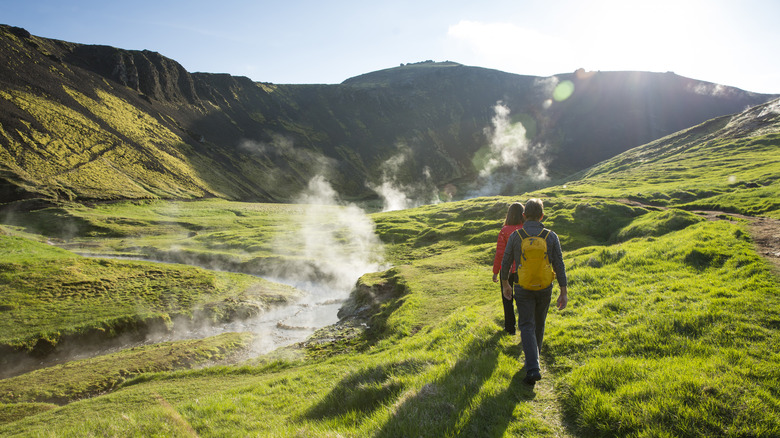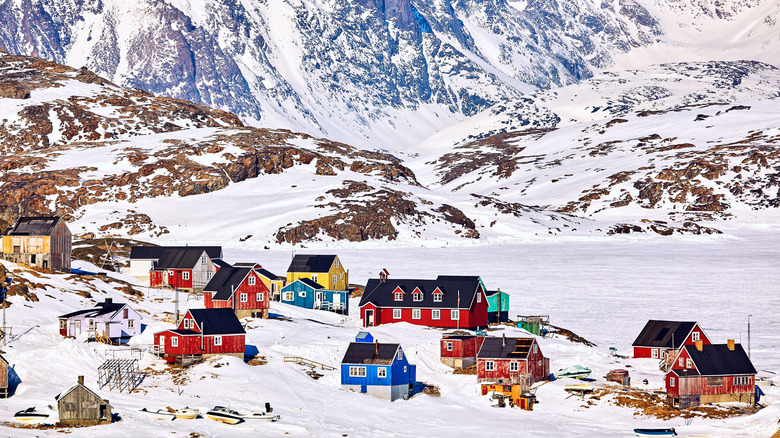Locals Of Iceland Hate When Tourists Make This Overused Joke About Their Country
Are you heading to Iceland this summer? When exploring this beautiful country, you will be met by a verdant landscape of almost technicolor greens. Meanwhile, if you're one of the few lucky visitors who make it to the Danish territory of Greenland, much of it will be covered in ice, no matter the season. This contrast has led to many tourists making one of the most overused jokes about the two destinations: Why is Iceland green and Greenland icy? Icelanders, in particular, are pretty sick of tourists making this comment. Local Nanna Gunnarsdóttir, wrote in a blog post on Guide to Iceland that "people always exclaim this like they are the most clever person on earth."
However, the question is valid, especially when confronted with the facts. Around 80% of Greenland is permanently covered by ice, while only 11% of Iceland is in the same condition. This is despite the fact that Iceland's capital, Reykjavík, is on a very similar latitude to Nuuk, the capital of Greenland. And Greenland's most southerly point lies further south than Iceland's. All of this begs the question: What is going on?
The difference in climate is thanks to the Gulf Stream. This makes Iceland's sea surface temperatures around 10 degrees Fahrenheit warmer than Greenland's. This means summers are warmer and winters milder in Iceland than in Greenland, allowing Iceland's lush landscape to bloom. Did the names get switched sometime? Not exactly.
The history behind the names
We must travel back in time to the Viking era to learn the origins of the names. According to the sagas, Iceland was christened by Flóki Vilgerðarson, a Norse settler who suffered through a devastating winter on the island. When he looked out over a fjord, hoping for signs of spring, he was greeted only by icebergs. All he saw was a land of ice, therefore, Iceland. One thing Flóki didn't have to worry about was mosquitoes: Iceland is one of only two destinations in the world where you can be guaranteed a mosquito-free vacation!
Greenland, meanwhile, was kind to early Viking settlers. The legend goes that Erik the Red arrived in Greenland in the late 10th century. At that time, southern Greenland was experiencing milder temperatures than it sees today, so the landscape was likely more hospitable and fertile. With the onset of the Little Ice Age in the 13th and 14th centuries, temperatures in Greenland plummeted, making it more akin to the white wonderland we see today. Erik the Red also settled in the warmer south of Greenland, which has some greenery, which also accounts for its name.
So, despite the stories, neither was trying to trick any settlers into staying away or arriving (probably). Are you planning to visit Iceland or Greenland? We recommend planning a visit for summer 2026. Both destinations are excellent destinations for viewing the 2026 solar eclipse and have some of the best hotels where you can view the northern lights.

